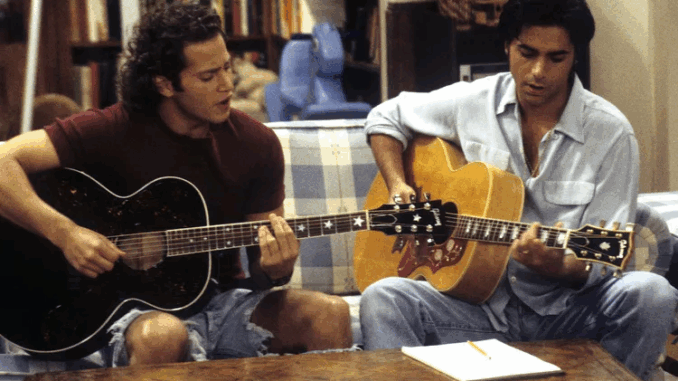
It’s been years since Full House first charmed TV audiences with its warmth, humor, and the unforgettable Tanner family. But when Fuller House hit Netflix screens in 2016, many wondered: could this sequel live up to the original? Spoiler alert—it did, and then some. But how did Fuller House manage to capture the hearts of a whole new generation while still honoring the nostalgic spirit of its predecessor? Let’s unpack the magic behind the sequel’s success.
The Legacy of Full House: Setting the Stage
Before diving into the reboot, it’s essential to understand the foundation laid by Full House. Premiering in 1987, the show chronicled single dad Danny Tanner raising his three daughters with help from his brother-in-law Jesse and best friend Joey. Its blend of family values, comedy, and heartfelt moments made it a staple for ’90s families.
Why Fans Loved the Original Tanner Family
The Tanner family felt genuine. They faced everyday problems, learned lessons, and most importantly, stuck together. This authenticity fostered deep connections with audiences, making Full House much more than a sitcom—it was a family experience.
Fuller House: A Nostalgic Return With a Modern Twist
Netflix’s Fuller House premiered nearly two decades later with many original cast members returning, but this time the story centered around D.J. Tanner, now a widowed mom raising her own kids.
Keeping What Worked
Fuller House wisely kept the core elements that made Full House beloved: family first, humor with heart, and memorable characters. The show preserved classic catchphrases and running jokes, making longtime fans feel right at home.
Updating for Today’s Audience
Yet, the sequel also brought fresh storylines that reflected modern family life, from blended families to working moms juggling it all. This helped it resonate with millennials and Gen Z viewers experiencing similar challenges.
Characters That Grew With Us
One of Fuller House’s biggest strengths is its ability to evolve beloved characters while introducing new ones.
D.J. Tanner: From Responsible Teen to Empowered Mom
Candace Cameron Bure returned as D.J., who now shoulders the weight of raising three kids alone. Her journey mirrors many real-life parents, balancing career and family with humor and heart.
Stephanie and Kimmy: The Dynamic Duo Returns
Stephanie Tanner (Jodie Sweetin) and Kimmy Gibbler (Andrea Barber) brought comedic relief and emotional support to D.J., recreating the friendship dynamics fans loved.
Next-Gen Tanners: Fresh Faces, Familiar Heart
The new generation of Tanner kids added contemporary charm, representing the challenges and joys of growing up in today’s world.
The Sequel’s Strength: Balancing Nostalgia and Progress
Fuller House struck a delicate balance—honoring the past without feeling stuck in it.
Easter Eggs and Throwbacks Galore
From appearances by Uncle Jesse (John Stamos) to the iconic Tanner family house, the show sprinkled nostalgia for longtime fans while telling new stories.
Addressing Modern Issues with Sensitivity
Unlike the ’90s original, Fuller House tackled contemporary issues like online bullying, blended families, and grief, making it relatable and relevant.
Why Fuller House Worked in the Streaming Era
The shift from network TV to Netflix gave Fuller House unique advantages.
Binge-Watching Boosted Fan Engagement
Viewers could watch entire seasons at once, deepening emotional investment and sparking online communities dedicated to the show.
Accessibility to New Audiences
Streaming made Fuller House accessible globally, drawing in fans who never watched Full House when it aired on traditional TV.
Criticism and Praise: Navigating the Sequel’s Reception
No sequel is perfect, and Fuller House faced its share of critiques.
Nostalgia vs. New Storytelling
Some critics felt the show leaned too heavily on nostalgia. However, many viewers appreciated the comfort it provided, especially in uncertain times.
Strong Fanbase and Cultural Impact
Despite mixed reviews, the series maintained a loyal fanbase, proving that the Tanner family’s charm transcends generations.
Lessons from Fuller House for Future Reboots
The success and challenges of Fuller House offer valuable insights for other revivals.
The Importance of Character Growth
Viewers want to see characters evolve naturally, not just repeat old patterns.
Blending Old and New
A successful reboot respects its roots but embraces the present, offering fresh perspectives alongside beloved traditions.
Conclusion
From Full House to Fuller House, the Tanner family’s journey shows us how a classic can be reborn for a new era. By blending nostalgia with modern storytelling and relatable characters, Fuller House captured the hearts of a new generation while honoring the original’s legacy. Whether you’re a lifelong fan or a newcomer, the Tanner family’s warmth, humor, and love continue to remind us all of the true meaning of family.
Frequently Asked Questions
Q1: What is the main difference between Full House and Fuller House?
Full House focused on Danny Tanner raising his daughters, while Fuller House centers on D.J. Tanner as a single mom, reflecting modern family dynamics.
Q2: Did all the original cast members return for Fuller House?
Most key cast members returned, including Candace Cameron Bure, Jodie Sweetin, and Andrea Barber, with several guest appearances from original stars.
Q3: How does Fuller House address modern issues compared to the original?
Fuller House incorporates themes like blended families, online safety, and grief, updating the show for today’s viewers.
Q4: Why did Fuller House succeed on Netflix?
Its availability for binge-watching, nostalgic appeal, and updated storylines helped attract both old fans and new viewers.
Q5: Will there be more seasons of Fuller House?
The show concluded after five seasons, but the Tanner family’s legacy continues through reruns and fan communities.
